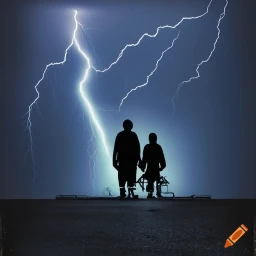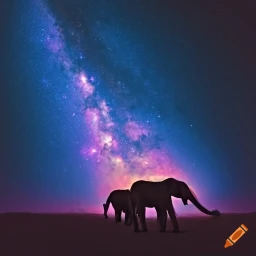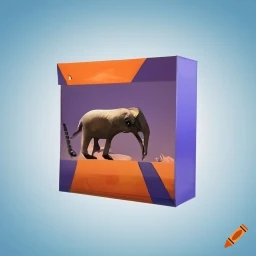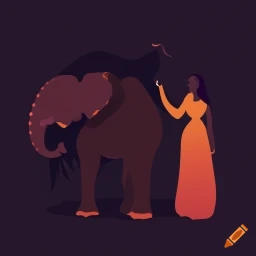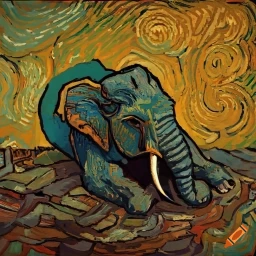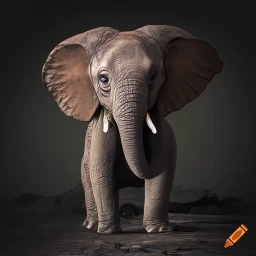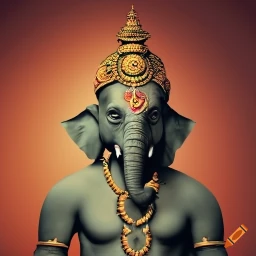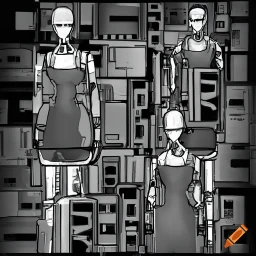Reading Time: 14 minutes
Author’s Notes: This is my attempt at an opening scene for the (tentatively titled) “Laws of Nature” as prescribed by “Story Genius.” The writing is not expected to be flawless or even complete at this point. What the opening scene must accomplish is:
- Define the overarching plot problem.
- Identify the main ticking clock.
- Establish the protagonist’s worldview that will be challenged throughout the story.
I was born from a container but was trying not to die in one. The men from the Nature Development Company, the NDC, had forced me into this steel crate with electric prods, and I had no way out. It was pitch black and cramped. They left me with no food or water. They left me to die without having to do the dirty work.
But the worst was Ms. Bixen. She told me that I had failed as a product to deliver her either happiness or satisfaction. I was devastated by her betrayal. I have lived on Ms. Bixen’s tea and coffee plantation for seven years, entertaining her party guests with stupid tricks and my ability to speak human. I have always done my best to ensure they are entertained and their curiosity satisfied. When they all laugh, I flap my ears and bounce from one front leg to another to pretend I am enjoying this trite demonstration because I was manufactured to please my product owner for whatever serves their purpose. My speech amused most of her guests, but I heard one man whisper to a woman that I was a soulless creature. The couple did not express anger but kept their distance from me.
My failure to engage the couple concerned me, so afterward, I asked Mahout why the man called me a soulless creature. Mahout was the hovering, metallic human figure that took care of me. Ms. Bixen called him a Guardian drone caretaker. Mahout had a way of explaining things to me in a way that made sense. Mahout explained that the man wanted to justify his right to despise me by denying that I have an inner life. I rejected this explanation because I had demonstrated my inner life with my performance. Besides, I had never seen this couple before, and they had no reason to hate me.
One night, one of Ms. Bixen’s lady guests said, “Bit of a white elephant, isn’t he? Does he do anything practical?”
Ms. Bixen growled, “Bidhaa is nothing but a pleasure.” She stroked my trunk affectionately like Mubwa, the matriarchal elephant who raised me, often did. She continued, “Bidhaa is one of the main attractions at the farm and brings in the most exciting guests and patrons. I couldn’t imagine running our plantation without him.” I was quite pleased that I was of service to Ms. Bixen.
The lady said, “The coffee and tea business must be pretty damn lucrative. You are so privileged to have a designer organism, but aren’t they illegal now?”
Ms. Bixen said, “No. It’s only illegal to let them breed with natural species. Technically, he shouldn’t be allowed with our African elephant, Mubwa.” Ms. Bixen leaned toward the woman and whispered, “I don’t think there is much danger of that, but let’s keep this between you, me, and the fence post.” I did not understand the meaning of the word illegal and struggled to fathom why the two women would share information with a fence post.
Another guest said, “Let’s not talk about the elephant in the room.” And they all laughed tremendously. They stopped asking me to do baby talk and went on to conversations about the “Death Star,” saving what little remains of wild places and investing in something called the economy. I needed more context to understand these lofty topics, so they lost interest in me. I was concerned with failing to engage her guests. Ms. Bixen dismissed me, saying I performed excellently. She told me how wonderful I was, and that was all I cared about. I retreated into the invisibility of her lost attention.
Later, Mahout explained that a white elephant is a coveted status symbol, expensive to maintain, and challenging to dispose of. It told me to keep charming the guests, and I would be worth to Ms. Bixen every afro she paid for me. It said it was a privilege to be a white elephant and I would have a long, happy life.
Mr. Bixen was the one dark cloud in our bright sky. I saw very little of Mr. Bixen in my seven years on the plantation. But when he came to the plantation, Mr. Bixen and Ms. Bixen would shout loudly at one another, Ms. Bixen would cry, and then he would leave. After one of his visits, Ms. Bixen started calling herself Ms. Bixen instead of Mrs. Bixen. She said she would divorce soon and wanted to get into the habit.
Mahout subsequently told me divorce meant leaving your herd for good to go live somewhere else. When I asked Mahout why anyone would leave their herd, it said, “They don’t like each other anymore to the point where looking at the other is painful. They will pay lawyers a lot of afros to argue against one another on their behalf so they don’t have to see one another.” I did not feel much of anything when I learned Mr. Bixen would never return.
It all changed when Mr. Bixen died. Mahout explained that dying was a lot like being decommissioned. Of course, I didn’t understand what that meant either, but Mahout said that its hive would eventually be turned off and replaced by newer, more advanced models. Mahout found it strange that biologics manufactured their own replacements. It said the newer biological models were called children, but in its estimation, they did not seem like upgrades. I asked it if I would someday make my own replacement. It told me it was illegal for a designer to do so, which sounded okay since I did not want to be replaced by an upgrade.
Ms. Bixen had many tears and spent long hours staring into space when Mr. Bixen died. For elephants, tearing is good health, but it means something is wrong for humans. Ms. Bixen was very sad.
Mubwa had told me about grieving and dying when she talked about her herd. She told me about trunk touching the body to keep the memory of the lost friend. I saw Ms. Bixen look at a picture of Mr. Bixen. And then she smashed it on the floor. The glass splattered into a thousand pieces. She shouted at it just like when he was here and still alive. I think she was trying to destroy the memory of Mr. Bixen, not keep it.
An NDC man stopped by not long after Mr. Bixen died. Ms. Bixen and the man talked on the veranda, where Ms. Bixen entertained her guests. She did not allow me to engage the man, but I overheard the man say, “The livestock is in good condition and has some resale value. I will give you better than a fair price for it and the plantation, including the old elephant.” Ms. Bixen did not answer, and after some hesitation, the man said, “Your husband left you with a huge debt. Your only assets are the plantation and the livestock. We will even let you stay here and manage the plantation for a salary. If you don’t accept our offer, you will lose both, and your credit rating might as well be zero. Let’s do this the easy way. Keep the lawyers and accountants out of this. It’s better for us, and it’s better for you.”
“What about Bidhaa?” she asked. My ears perked up.
The man said, “His last product license renewal was a month ago, just before Mr. Bixen’s death. The product license won’t expire for another two years from that date. He is yours until then. If you choose not to renew, his end-of-life, product obsolescence gene will express.”
I did not know what “expire” and “obsolescence” meant, but I didn’t like their sound, even before Mahout explained their meaning to me later. It told me that I was legally the property of Nature. If no one paid the renewal feed and the product license expired, I had a unique gene that would decommission me unless the NDC gave me a booster vaccine. It said my unique genes made me a designer product, an Intelliphant® different from other Tembo. When I told Mubwa I didn’t like being unique, she told me that being unique kept me from getting eaten by lions or shot by hunters.
Ms. Bixen asked the NDC man, “Mr. Bixen always handled those things. How much will that cost?”
“One hundred thousand afros. Same as always.”
“Oh, dear. I don’t have that kind of money. Would you include the renewal fees in your offer?”
“No, ma’am. I’m sorry, but you don’t have any leverage to negotiate, and I was not given permission to change the offer. Consider the NDC offer best and final.”
“Two years. My god. I can’t afford the two-year maintenance, let alone the license renewal fees. Damn, you, Mr. Bixen. How could you? I should have finalized the divorce and separated our assets when I had the chance.” I heard Ms. Bixen starting to cry. She sobbed, “I don’t have that kind of money.” Through her sniffling, I heard her say, “What other options do I have? Would you repurchase Bidhaa from me?”
“Sorry, ma’am. As the ‘Property of Nature’ viral branding on his flank indicates, we already own Biddha. But, your contract requires you to handle all disposition fees and processes. We don’t really want him back. We discontinued the Intelliphant® Product Line because of the endless intellectual property rights disputes. Bidhaa was the last of his kind. If you can’t afford to maintain him, I think self-termination is best. It’s a simple process. Shame him. Put him in isolation and darkness for a few days, and the premature disposition gene will express.”
Ms. Bixen said, “Oh my. I don’t think I could do that. A few days is a long time to suffer. It sounds so inhumane. Bidhaa is like family.”
“We could do it for you, but it would cost fifty thousand afros.”
She gasped and said, “Why so much?”
The man answered, “Veterinarian fees. Coroner fees to certify the legal cause of death. Final disposition fees. Attorney fees for filing the death certificate. It all adds up.”
Ms. Bixen stared into the distance, though I don’t think she was looking at anything in particular.
I was pretty alarmed at this talk and didn’t like the man at all. I didn’t understand afros so well, but it sounded like she would consider doing those things to me if she had had enough of them. I wanted to find the afros and hide them from her. Still, I dismissed his words, thinking they were like what I heard on the flatscreen. Mahout explained that the flatscreen is a way to learn how things might happen without having them happen to you.
I had watched the humans and learned how to turn the flatscreen on and off. I would turn it on when the humans went to the outside. The flatscreen once showed me a creature called a lion. I learned that a herd of lions is called a pride. On the flatscreen, I saw a pride of lions attack an elephant much larger than myself, and the lions decommissioned that elephant forever. I was horrified and ran to Mubwa for comfort. Mubwa said I was safe from lions as long as I stayed in the compound. I stopped watching the flatscreen and vowed never to leave the safety of the walls.
Mubwa has been like a mother to me, though I didn’t meet her until I was a couple of years old. I always thought my mother was a container. My first memories were of standing on all fours in the dark womb of a box in the belly of a truck. I choked on the fumes of gas and the dust rising from the ground, jolted by the potholes and ruts of the unpaved road, unable to lie down in the cramped quarters. When the rough ride ended and the package was delivered, I glimpsed my first rays of painful sunlight. I remember hearing men yelling, “Bidhaa. Bidhaa. Hapa.” I thought my name was Bidhaa and have gone by that name ever since. When I was educated enough to question its meaning, Mahout explained that Bidhaa is the Swahili word for product. Mahout explained that it, too, was a product and that we had both been manufactured in South Africa and shipped to Tanzania to serve the Bixens.
Mubwa called me an orphan, which she said is a name for one that does not have a mother, though it does not seem that way with her around. She told me I was not manufactured but had a real mother somewhere. She said my mother might still be alive where I came from. Mubwa has always been a mother to me. She said we are alike because we have both lost our herd. I understand her meaning, but I do not think we are alike. She has detailed memories of her herd. I have none. I belong to the Ms. Bixen herd with Mahout, Mubwa, and Kuchota, the dog.
Mubwa has taught me the three languages of the elephant: touch, talk, and rumble. She told me the language of touch is a form of writing for intimacy and secrets. I like the way it feels when we trunk touch. The language of talk is for everyday stuff, like when Mubwa tells me it is time for lessons or to come to eat hay or a banana bunch.
Occasionally, we heard the rumbling of distant herds from outside the compound. Mubwa called back, but the others did not come to us. Mubwa said it is damn peculiar that I can speak the language of the humans. She had never met another elephant that could do so.
Ms. Bixen had little use for me when she was not entertaining her guests. I spent most of my time playing with Kuchota. He is a simple creature that follows me like a duckling following its mother. He does not speak words I understand, but I can always read his intentions. His tiny legs quiver in anticipation of the sticks and balls I throw for him. We swim in the pond when I grow tired of the fetch game. I spray water into his trusting face every time. He never learns. His angry barking at my treachery delights me to no end.
When Ms. Bixen spoke again, she said, “Can I release Bidhaa in Nyerere Park or a sanctuary?”
“Not legally. Tanzanian law forbids the release of designers like Bidhaa or even ecogenetically engineered organisms (EEOs) like the Tembo into the wild. You can’t even sell them here.”
“What do you mean? We bought him here from you, didn’t we?”
“Ten years ago when it was legal. The “Keep Tanzania Wild Act” forbids selling designers in Tanzania anymore. Bidhaa was grandfathered in under the new law. You could take him to Mozambique or South Africa. Mozambique is closer, but you would have to find a buyer. In South Africa, there are other Tembo on the Kruger reserves. He could even live with the herd he was sourced from. The South African government pays for all of their licensing fees.”
I was intrigued. The man said I came from a herd in Kruger. I didn’t know where Kruger was, but I wanted to find out. Maybe I had a mother there like Mubwa said.
Ms. Bixen seemed interested, but the man dissuaded her. He said, “However, the trafficking of large animals across international borders is legally tricky, with enormous tariffs, and someone would still have to pay the license renewal fees when the time comes. International processing would be even more expensive than termination on a million afro product like your Intelliphant®. You would be better off just shooting him.”
“Could I do that?”
Her voice sounded cheery. My jaw nearly fell off my face. I knew what shooting was. Mubwa had told me what happened to many of her herd and how they died from the thunder sticks, as she called them. I must have heard Ms. Bixen wrong. I couldn’t imagine she would contemplate doing such a thing to me. I wanted to run to Mubwa, but I had to keep listening.
The man answered, “Legally, no. It could be considered poaching, and its penalties are very harsh. You don’t want to risk twenty years in prison, do you? I’m sorry, ma’am. I didn’t mean shoot him literally. It’s just an expression.”
At least, that was a relief. The NDC man left. Still, I wanted to cry. I thought of the terrible things that could happen, just like in Mubwa’s stories. I decided to confront Ms. Bixen. I approached her on the veranda. She was staring off into the emptiness of the sky again. I asked, “What will happen to our herd?”
Ms. Bixen never looked at me. She said, “I don’t know how to explain, Bidhaa, but things are happening beyond my control. That asshole husband of mine really screwed me over. I’d kill him myself if he wasn’t dead already.” She stepped closer and rubbed my trunk like she was trying to remember a lost friend. She touched her cheek to mine and then ran off. I did not like being touched like I was a body to grieve. I wanted to hide behind Mubwa for comfort, but I ran to Mahout for explanations instead.
Mahout explained that designer biologics have something inside them called the premature disposition gene. He warned me not to succumb to sadness or despair because the premature disposition gene would express and kill me in three days.
Then Ms. Bixen came to me with the electric prod toting NGC men. They prodded me into the trailer. Despite the pain, I tried to say the cute things that made Ms. Bixen’s guests laugh. I was zapped every time I spoke. Ms. Bixen came into the trailer. She did not come close, and two men stood between us with shocking sticks. She shouted, “Because of you, I had to return Mahout. You’ve ruined my career and made me a miserable woman.” I lowered my head to reflect my shame. “Mr. Bixen worked himself to death because of you, working so hard to pay for your food, and all you do is play with that stupid dog.” Even in the darkness, I could see that she was fighting off the tears. She blubbered, “You are not an elephant and you aren’t a human. You don’t belong anywhere. You are worthless and don’t deserve to live.” Ms. Bixen ran from the trailer, and the men backed out, never taking their eyes off me. They shut the door behind them, leaving me in complete darkness.
Sitting in the stillness of my tomb, I was determined not to make it that easy for Ms. Bixen and the NDC to decommission me because Ms. Bixen couldn’t afford to pay for my upkeep and licensing fees. Still, I might have given up if not for Kuchota’s howling and scratching on the metal casket I was trapped in.
I rumbled to ask for help. I knew the humans couldn’t hear the rumblings, and they would not attract their attention. No one answered my rumblings. I stood up, squeezing my way to the door, stood on my hind legs, and tried to push it open with all my weight. The door didn’t budge. I tried again and again.
Kuchota’s barking and pawing stopped. When Kuchota gave up on me, my hope vanished, and a wave of sadness swept over me. I crumbled to my four knees. Desperation is an odd mix of anger and despair. The shame of displeasing Ms. Bixen burned in my brain. I had no value to her anymore. I realized I was a burden. I had failed my purpose as a product to bolster the ego and status of Ms. Bixen.
Mubwa had told me of her pain at losing her herd. I had tried to imagine it as she told the stories, but this was the first time I felt real hurt cut through my heart like a bull elephant sitting on my chest. My energy left me, and my eyes dried. I hadn’t believed all that talk about premature disposition and product end-of-life genes until now. I could feel the disease within me. I realized I was going to die, and I could do nothing to save me from myself.
I heard the ripping of metal. And then the door creaked open. I looked up and said, “Mubwa?”
Mubwa reached in, and with her trunk, she said in touch, “Ssh. Be quiet. I would have been here sooner, but I had to silence that damn dog. Follow me. We don’t have much time.” It took a minute for the surrender of hopelessness to fade enough to give me the strength to rise. Mubwa touched, “Hurry. Damn it. We don’t have all night.”
I followed her to a back gate of the compound. She let me out. She touched, “This is the best I can do. I can’t take you because I am too old and slow. You will have to get yourself to Neyere. Find yourself a herd that you can run with. Remember all the stories I have told you about lions, hyenas, and poisonous snakes. Follow the roads and travel at night. Stay off the roads in the daytime. They aren’t safe. Don’t trust anyone until you get to Neyere. It is a strenuous two-day hike from here to the park.” She pointed south in the direction of the park.
I said, “I’m not leaving here without you.”
She said, “Get lost or you will get dead. Now go!”
I started toward her, but she raised her tusks as if to charge. I could see in the wildness of her eyes that she was serious.
There was no goodbye. Mubwa closed the large gate, and I stood outside the compound alone under the light of a half moon. It was the loneliest feeling I have ever had, running from a life that no longer existed.
I didn’t know what else to do. So, I started walking toward Neyere in the direction Mubwa had indicated. I crossed through the rows of coffee trees, grabbing at the branches and eating as I walked. I crossed a paved road onto a dirt road. Mubwa told me to trust no one, but I would be decommissioned by an end-of-life gene in two years if I could not find someone to pay my licensing fees. I would have to do more than trust someone. I would have to find someone who valued me enough. I thought of living in a herd with my mother in Kruger, if I had a mother in Kruger. But I did not know how to get there. I didn’t even know where it was.
In the lost distance, I heard Kuchota bark. I fought the urge to feel sadness. I imagined the barking getting closer and louder. And then Kuchota was walking at my side, wagging his tail and panting. I never believed I could be so grateful for the companionship of this so-easy-to-please beast. We set off in the moonless dark together, following the road Mubwa said would lead to Neyere.
Author’s Notes: Let’s see how I did. What do you think?
- Is the overarching plot problem unavoidable? Will it escalate?
- The main ticking clock? What are the stakes?
- The protagonist’s worldview that will be challenged throughout the story? Does it cost emotionally?
author.mike.angel@gmail.com
Featured image by Craiyon.
